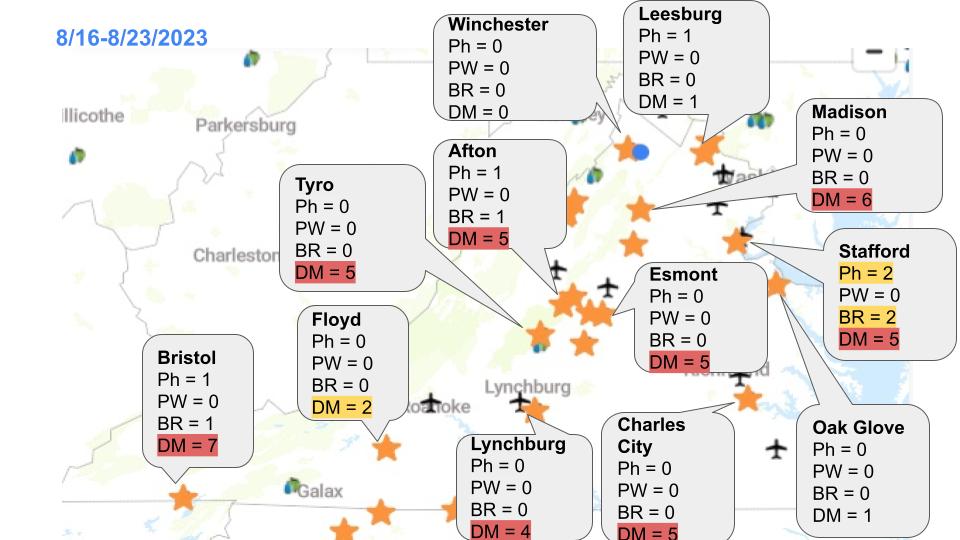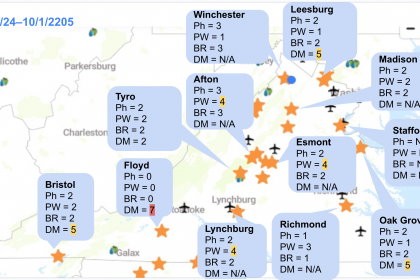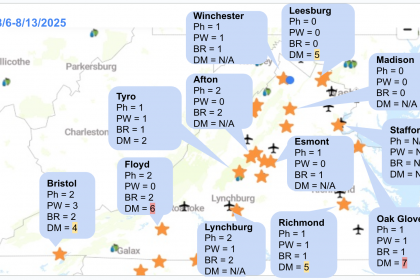Here’s a snapshot from the last week, showing the number of days with the risk of each disease: Ph = Phomopsis, PW = Powdery mildew, BR = Black rot, and DM = Downy mildew. At this point, you can ignore Phomopsis and black rot since Phomopsis should be done with their spore production, and clusters are resistant to black rot infection. This information was made available through the Wine Board-funded Sentinel Vineyard project.
It looks like we all had a relatively dry week. The high number of days with downy mildew most likely indicates a combination of warm and humid nights and occasional short rains. Please remind yourself that the best approach is prevention. Once we get behind and start playing catch-up, keeping healthy tissues remaining uninfected won’t be easy.
Please ensure you won’t violate the 66-day PHI of Mancozeb products. Some products have a relatively long PHI (e.g., Ranman’s PHI is 30 days). This post contains the list of fungicides with short PHIs. Make sure to read the label or refer to our PMG. Also, you may need to protect your vines against powdery mildew because they can infect leaves and shoots. Here’s a slide set from our previous meeting discussing late-season rot management.

The image above concisely summarizes the past seven days, aiding your understanding of recent events. However, the best action is proactively safeguarding your vines. For more comprehensive information, please visit https://newa.cornell.edu/, where you can access detailed daily weather data and disease and insect pest model results, including forecasted risks. We have covered the annual fee to ensure free access for growers in Virginia to the NEWA platform.
Utilizing this information, you can adjust your spray intervals accordingly. If you notice several days with disease risks, you may need to shorten your spray interval. Conversely, if you missed a material for downy mildew or black rot, you might consider using materials with kick-back activity. On the other hand, if the number of risks has been limited this year, you could extend your spray interval.
Remember that your spray decision should not solely rely on weather conditions. It is crucial to consider factors such as the cultivar and the disease’s history in your vineyard.





